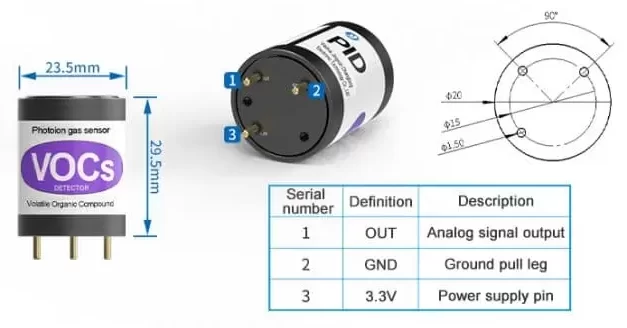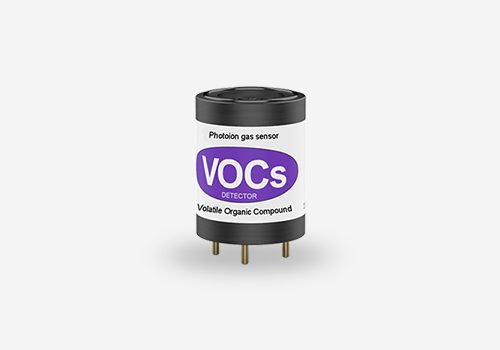Volatile Organic Compounds (VOCs) are a diverse group of organic chemicals that can have both short-term and long-term adverse health effects. Sources of VOCs include a wide range of everyday products and materials, such as cleaning agents, paints, adhesives, and building materials. Given the potential impact of VOCs on human health, monitoring indoor air quality for these compounds is of paramount importance.

In recent years, VOC sensor have become as crucial tools for detecting VOCs in indoor environments. This article will explore the significance of VOC sensor in indoor air quality monitoring, their functionality, and the benefits in maintaining a healthy indoor environment.
Understand VOC sensors
VOC sensors , also known as VOC detector, are electronic devices designed to detect and quantify the presence of volatile organic compounds in the air. These sensors utilize various technologies, such as metal oxide semiconductor (MOS) sensors, photoionization detectors (PID), and gas chromatography, to measure and identify specific VOCs present in indoor air. By providing real-time data on VOC concentrations, these sensors enable building managers, safety professionals, and homeowners to assess indoor air quality and take appropriate measures to mitigate potential health risks associated with VOC exposure.
Primary functions of VOC sensor
identify and quantify the presence of specific voc
One of the primary functions of VOC sensor is to identify and quantify the presence of specific volatile organic compounds in indoor environments. These sensors are capable of detecting a wide range of VOCs, including formaldehyde, benzene, toluene, xylene, and various other organic chemicals commonly found in indoor settings. By continuously monitoring the air for VOCs, these sensors provide early warning of potential indoor air quality issues, allowing for prompt intervention to address sources of VOC emissions and reduce occupant exposure.

real-time data on VOC concentrations
In addition to detection capabilities, VOC sensors play a crucial role in assessing the overall indoor air quality by providing real-time data on VOC concentrations. This data can be used to evaluate the effectiveness of ventilation systems, identify areas of high VOC concentration, and assess the impact of specific activities or events on indoor air quality. By integrating VOC sensors into building management systems, facility managers can gain valuable insights into the factors influencing indoor air quality and implement targeted strategies to improve ventilation, reduce VOC emissions, and create a healthier indoor environment.
Reduce potential health risks
Furthermore, VOC sensors contribute to the implementation of proactive measures to mitigate potential health risks associated with VOC exposure. Elevated levels of certain VOCs can cause a range of health effects, including eye, nose, and throat irritation, headaches, dizziness, and in some cases, long-term health consequences. By utilizing VOC sensors to monitor indoor air quality, building occupants and facility managers can take preventive actions to minimize exposure to harmful VOCs, such as adjusting ventilation rates, using low-emission building materials, and implementing source control measures to limit VOC emissions from products and furnishings.
long-term trend analysis
Moreover, the data collected by VOC sensors can be utilized for long-term trend analysis and proactive indoor air quality management. By tracking VOC concentrations over time, facility managers can identify patterns, trends, and potential sources of VOC emissions, enabling them to develop targeted strategies for improving indoor air quality. This data-driven approach to indoor air quality management not only enhances occupant comfort and well-being but also supports sustainable building practices by promoting the use of low-emission materials and reducing the environmental impact of indoor air pollutants.
conclusion
In conclusion, VOC sensors are indispensable tools for monitoring indoor air quality and mitigating the potential health risks associated with volatile organic compounds. By providing real-time detection and quantification of VOCs, these sensors enable building managers and occupants to take proactive measures to maintain a healthy indoor environment. As the awareness of indoor air quality continues to grow, the integration of VOC sensors in building management systems and indoor air quality monitoring programs will play a pivotal role in ensuring safe and sustainable indoor environments for occupants.
